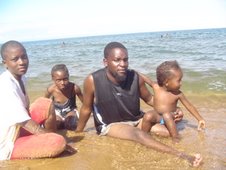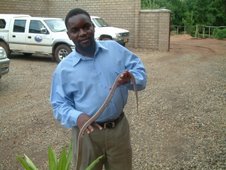
(This article appeared in the Traveller Magazine)
Lake Chilwa – Malawi’s forgotten lake?
Stories and pictures by Hastings Maloya
If a group of primary school pupils were asked today to name Malawi’s second largest lake, surely it would take sometime before a correct answer is given. Not only among primary school pupils, even secondary school students may not know which lake in Malawi is second to Lake Malawi in size.
More so, known professionals in different fields may not have an immediate idea that Lake Chilwa is Malawi's second largest lake. It could be a forgotten lake but it does not deserve to be. How about the fact that it is one of the most productive lakes in Africa?
Situated in the country's former capital of Zomba, about 70 km from the commercial city of Blantyre, Lake Chilwa is a shallow tropical salt-water lake with no outlet. The inland drainage lake stretches 60km long and 40km wide and shared in boundary by Phalombe, Machinga and Zomba districts. Many people are silently benefiting from this shallow body of water, which is only seven metres at its deepest point.
Over 6000 fishers ply their trade on the salty waters of Lake Chilwa. It has a dozen of fish species with a highest population of herrings (matemba). It is estimated that over 20% of fish caught in Malawi, comes from Lake Chilwa. Wherever one may live in Malawi despite whatever distance it could be from Zomba, but whoever enjoys fish for a meal may have had a taste of local matemba. And they are all from Lake Chilwa. Then, there is the popular matemba a Domasi – proudly a Lake Chilwa product.
The lake also lies in the boundary between Malawi and Mozambique to the east. It is therefore a route for people travelling to and from both countries. This creates a major trade route for informal import and export of goods between the two countries. Ferry owners and operators transit goods including bicycles, cement, iron sheets, sugar, soft drinks and many more through the waters of Lake Chilwa.
On the lake are two islands of Chisi and Thongwe. Chisi the bigger island has a population of over 2000 habitants. Their main source of livelihood is fishing.
The lake and its wetland is also a home of large populations of breeding waterfowls and an estimated 1000 bird catchers are economically relying on the lake. Lake Chilwa and its wetland boasts a total of 161 localised bird species and 41 Palaearctic migrant bird species with a total estimated bird population of 350, 000. The lake also supports large populations of breeding waterfowls.
What a beautiful place for bird watching.
The existence of fish and other natural resources on Lake Chilwa which are sustaining thousands of people economically, makes it not only one of the most productive lakes in Africa but unique as well.
The Lake Chilwa wetland was declared a listed site under the Ramsar Convention on March 14 1997 making it qualify as a wetland of international importance alongside other wetlands of the same nature world-wide. The wetland comprises open water, typha swamp, marsh and flood plain grassland. It has a vegetation that is used for economic activities like making brooms, baskets, fish traps and building materials for roofs, walls and fences. The grassland also forms the basis for existence of livestock.
However, the majority of Ramsar-listed wetlands in Africa and elsewhere are situated in national parks and are thus legally protected. This is not the case with Lake Chilwa wetland. It is an open-access common resource, which lies in one of the most densely populated and impoverished areas of Africa, making it a unique wetland with unique problems.
To get to Lake Chilwa, from Zomba town go on with the road to Liwonde to Matawale turn off; take the Air wing road about 30 km of dusty road past Govala Trading Centre takes you to Kachulu Harbour. You are at Lake Chilwa!
It’s a place worth travelling to.








No comments:
Post a Comment